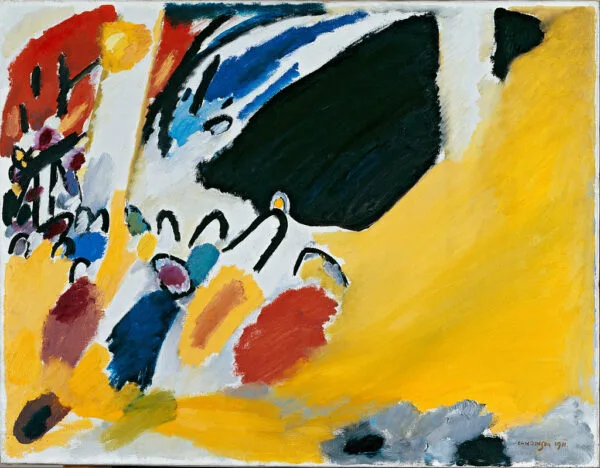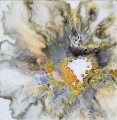Is your painting abstract or non-representational art? Does it matter? In the Artworld, yes, it does matter. Understanding and being able to explain your work – and that of your peers – is a vital part of being a professional artist. So how do you tell the difference?
Non-representational vs Abstract Art
A simple way of identifying the difference is: was the artist inspired by something they felt or something they saw?
With abstract art we are inspired by something we see
If we squint, we can make out what has been abstracted. A human figure is among the most common item to abstract. But it could be a seascape, a landscape, a ship, or a building.
With non-representational art we are inspired by what we feel
Nonrepresentational art is work that does not represent or depict a being, place, or thing. Instead, we enjoy random splashes of color, geometric shapes, and swirls of texture not found in the real world.
But you often hear these two distinct styles lumped together under the generic term of “abstract art.” Mistakenly, non-representational art has devolved into a synonym for abstract art.
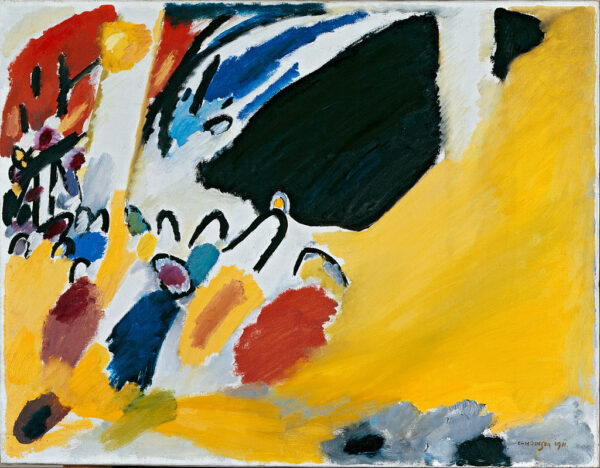
Abstract art
Where did abstract art come from?
To know what non-representational art is to understand what it isn’t. The beginnings of modern abstract painting are generally traced back to the Russian male artist Wassily Kandinsky. In fact, that mantle may properly reside with the Swedish female artist Hilma af Klint, who is receiving something of a renaissance, or “discovery” (that most chauvinistic of terms) in the contemporary art world. Both artists’ works and processes identify with spirituality in some way; Klint’s certainly did
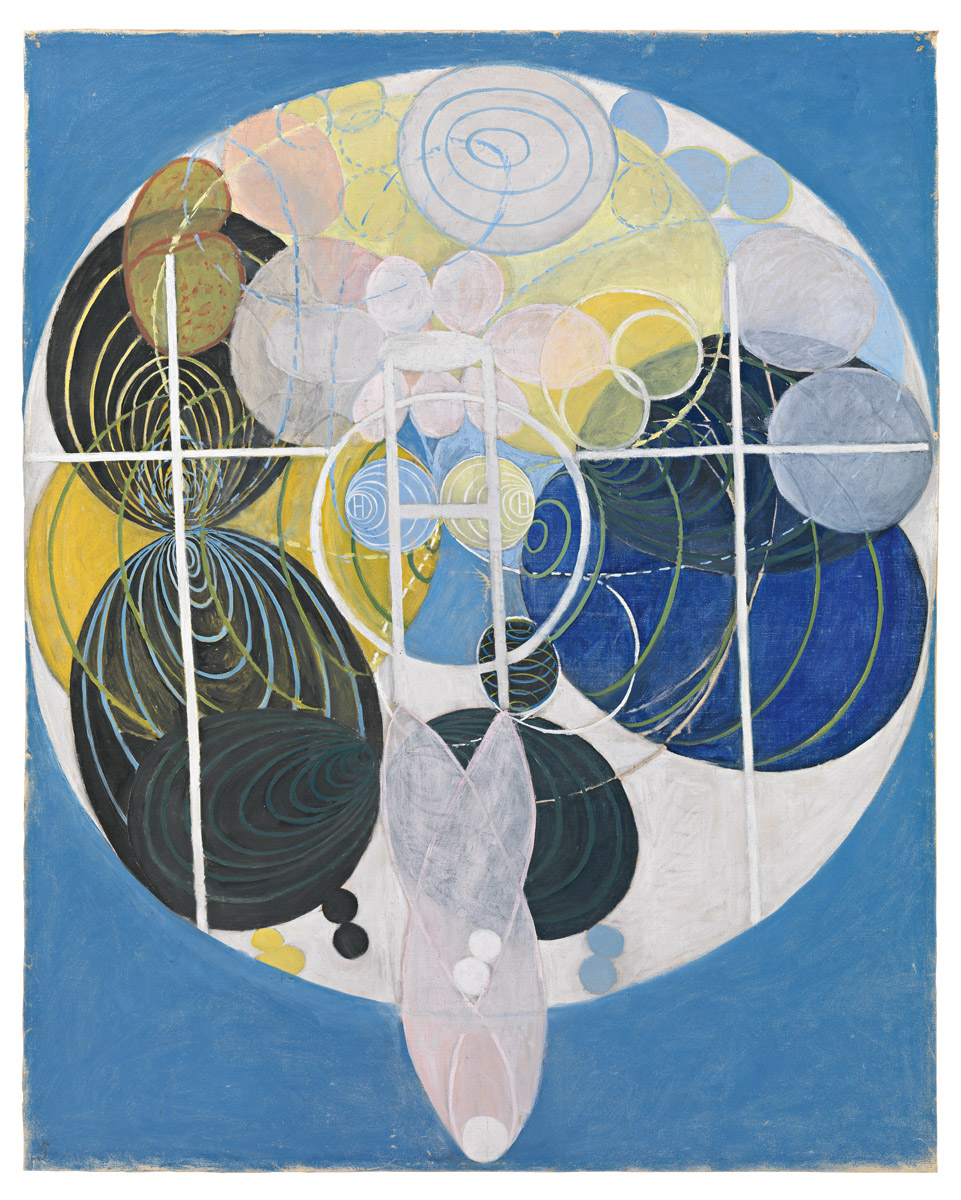
Color, shape, and form play a dynamic and idiosyncratic role in both artists’ work. These paintings are filled with circles, triangles, points, and diverse perspectives that would have confused and infuriated the Renaissance masters. Klint’s work is more radiant and hallucinogenic, more tactile and soothing. Conversely, Kandinsky’s art is all angles and sharp points, more protruding and aggressive. I think it would not be too clichéd to consider Klint’s work more female and Kandinsky’s more male.
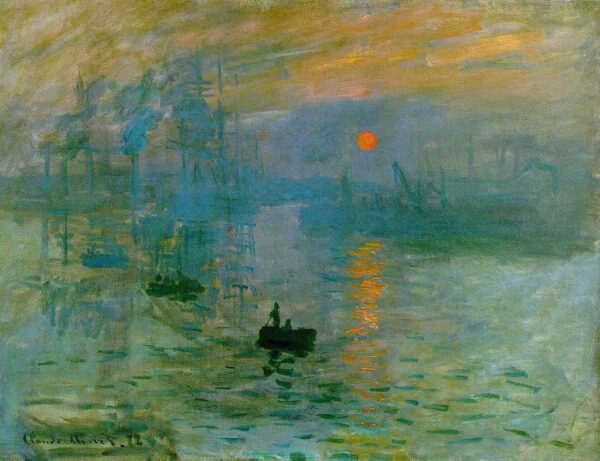
Was Monet a non-representational artist?
Non-representational art has origins that may surprise the casual student of art history: JMW Turner’s mid-19th-century naval paintings. View his Sunrise (1825-30) or The Fighting Temeraire Tugged to her Last Berth to be Broken up (1838), and the journey into impressionism begins. He quickly heads into seascapes that, without the titles, would be difficult to perceive as physical locations.
Monet picked up the impressionism paintbrush 50 years later with Impression Sunrise (1882), where the art movement gets its moniker. Impressionism is its form of abstraction.
However complex these artworks are, they are still tethered to an unavoidable reality: that of identifiable lines and shapes and mark-making. However, their composition and execution may owe as much to the non-representational as the abstract—more of a pure abstraction than a detour from the reality presented to us by the physical world.
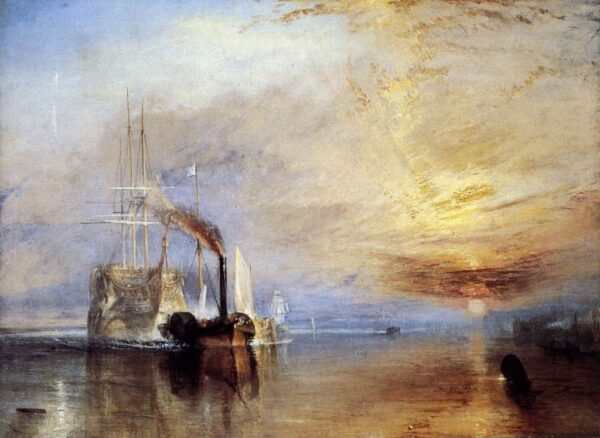
Was Picasso’s art abstract or non-representational?
A certain abstraction creeps into the world of figurative art. Pablo Picasso’s cubist images are difficult to discern. Here is the face of a human figure, or there a violin, but not entirely recognizably so.
His Cubism is the two-dimensional world of painting forced into a three-dimensional abstraction. It is truth, but it is a confusing and abstract truth. Cubism is the painterly equivalent of the splitting of the atom, and we are still learning to be its contemporaries.
How abstract is abstract art?
That is a great question. Do we have to work hard to see what something is to consider it abstract?
Picasso never went full abstract, nor did his great rival and sparring partner, Henri Matisse. They both dipped their toes into abstraction, though—Matisse with his wonderful and enigmatic painting French Window at Collioure. The strips of vertical colors hint only at the scene by adding the title. This painting was understandably an inspiration to Mark Rothko. In the 1950s, Matisse also produced his late career cut-out The Snail, which would be a total abstraction without its title.
Neither Picasso nor Matisse could be accused of being a “spiritual” artist. They were both far more scientific in their approach, and Picasso was a fully paid-up member of the French Communist party (not noted for its sympathetic attitude towards life’s spiritual side).
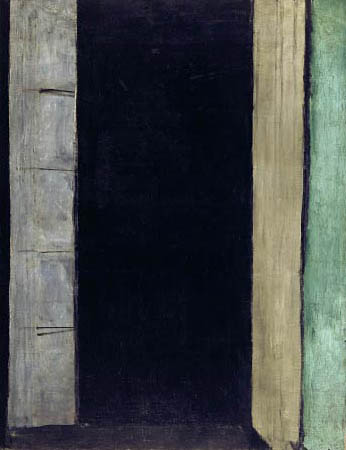
What’s the problem with abstract art?
Abstraction remains as popular to viewers and artists as landscapes (itself an ideal subject matter for abstraction). But the main issue with abstraction is that we tend to search for the subject ahead of everything else.
We can turn our heads trying to identify the subject with abstract art. In so doing, we create a distance between how we feel and what we see.
The Origins of Non-representational art
In contrast, non-representational art is more of a 20th-century invention. If you hear the term non-objective art, it is essentially the same thing.
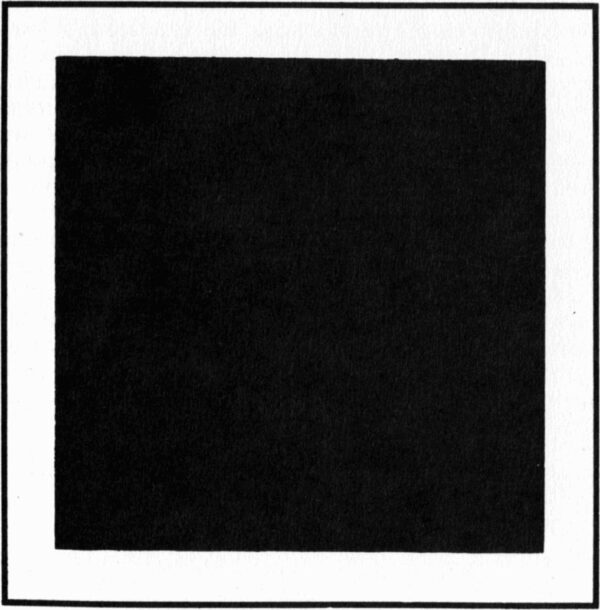
Kazimir Malevich is deemed the father of the non-representational movement in western art. His art movement of Suprematism sought to move art away from the concrete into the realms of inner feelings and, again, spiritualism (there’s a theme developing here). Malevich’s black square is the precursor to many artworks that sit within the fields of Abstract Expressionism and Minimalism. From Frank Stella’s Black Series to Anish Kapoor’s work with Vantablack (alleged to be the blackest black in the world), Malevich inspired generations of non-representational artists.
Describing non-representational work is easier visually, as you would expect for something that doesn’t depict the real world.
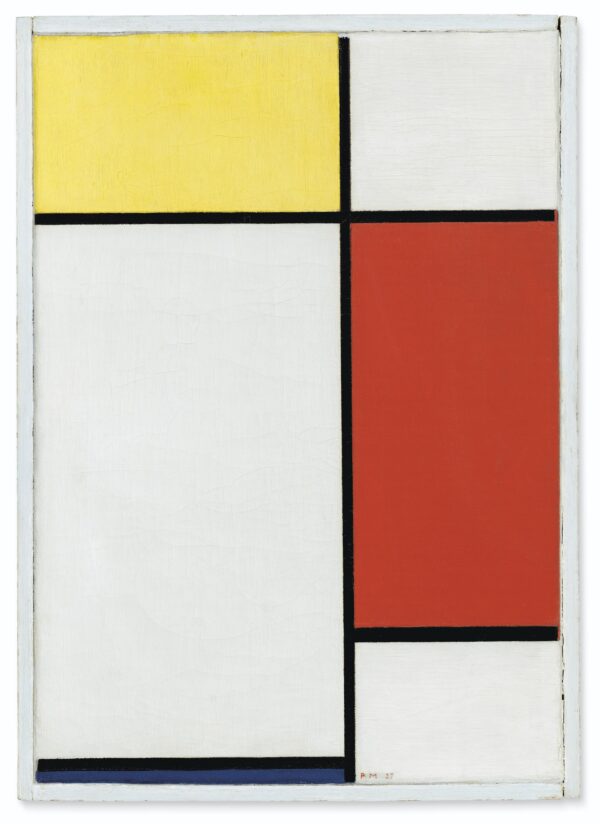
The geometry of Mondrian
Piet Mondrian is probably the artist our mind first lurches toward and latches onto when we hear the word “abstract.” Mondrian’s geographical approach marks him out as a non-representational artist. Inspired by nature, Mondrian spent his career looking for a formula that would express beauty on the flat surface of canvas or board. You can’t find a tree, a cornfield, or a cow in one of Mondrian’s abstractions. However hard you squint your eye.
His abstractions still have identifiable lines and shapes and hold a rigidly stylized geometric composition. Despite Mondrian’s protestations, his art feels well thought out and meticulously designed. There is nothing shamanistic in these paintings.
The American Abstract Expressionists
To think of the non-representational in art, I always wonder, first and foremost, about those twin behemoths of 20th Century American art: Mark Rothko and Jackson Pollock.
Rothko and Pollock’s classic paintings are works of sublime creativity cast out by a purely artistic soul. What does their work mean? Whatever we feel them to suggest. They are as immersive as painting gets. They are pure abstraction, pure painting, and pure art. There was nothing left after them.
They took painting as far away from its foundations and beginnings as it was possible to go. They elicit a feeling in the viewer’s psyche, not intellect.
How to look at non-representational art
Of course, a painting without a clear subject can leave you feeling like you are doing all the hard work. Sometimes an artwork’s title can hint at how the artist felt and make you feel the same. Even the title “Untitled” indicates the artist’s intent to obfuscate. Untitled doesn’t mean the artist couldn’t think of a title.
If you’re looking for more clues in an artwork’s title, read out blog on how to title artwork.
Mark Rothko and the emotion of non-representational art
Mark Rothko’s orange paintings bring a sense of joy. The response is purer and more emotional. We can look at a work and feel joy, confusion, or even distress.

Jackson Pollock: non-representational art as energy and movement
Pollock created physical paintings. Pollock’s work is resolutely untethered to the concrete nature of the world surrounding us. However, it captures a physicality all of its own. What is more physical than the nature of a Jackson Pollock “drip” painting?
What’s the appeal of non-representational art?
The beauty of non-representational work is the freedom it gives – both artist and viewer. The artist can paint (or sculpt) by emotion. And the viewer can see with equal freedom.
There is a disconnect somewhere between the abstract and the non-representational, but it is all sliding borders and blurring lines. The best way of considering art is as a spectrum, and each artwork has its place: from the photorealist to the impressionistic, from the expressionistic to the geometric, from diminishing composition to no composition at all, and in the end, just a blank untreated canvas.
So, could a child do it?
It’s a common misconception from art skeptics who have a narrower idea of what constitutes art, that if there is no figure or recognizable element to a painting, it must be easy. The marks are accidental, the colors meaningless. But non-representational art is often an attempt to express unadulterated emotions – and who can do that better than a child?
If you’re exploring your own abstract or non-representational technique, check out our beginner’s guide to abstract art.

